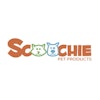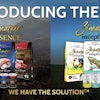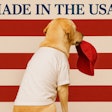As the petfood industry becomes increasingly international, companies and their managers must break through market complexity by choosing reliable, unbiased sources of information. Increased competition from both foreign competitors and boutique brands requires actionable intelligence to make quicker and timelier strategic decisions.
One method of analysis that progressive petfood manufacturers and brand holders are incorporating is the use of trade data. This information, while not new to some companies, is creating value across marketing, sourcing, sales and legal departments.
What is trade data?
Trade data provides information on the movement of physical goods (raw materials and finished products) from one country to another, including exports and imports. This information can come in the form of:
- High-level statistical data outlining total trade volumes between countries or for a given commodity code, known as a harmonized tariff schedule code (HTS); or
- Very detailed shipment reports outlining actual companies and products at a bill of lading/manifest level.
Generally, all of this information is collected by government sources but is typically disseminated by private companies that work with government agencies.
US data: high-level stats
The most referenced form of trade data is the information gathered by the US Census Bureau. This data consists of the total imports and exports for the US using the harmonized system. Census data is provided at a high level, with dollar value typically being the unit of measure. This data is comprehensive, covering all imports and exports.
The lowest level of information available within US Census data is at a harmonized product level. For example, a user could see the total value of all dog and cat food in general (HTS code 230910) imported and exported in 2008 ( Figure 1 ). You can also examine which countries export the most dog and cat food in airtight containers (HTS code 2309100010) to the US and which countries receive the most exports from the US ( Figure 2 ). Often, this data is referenced when discussing the trade deficit.
Detailed shipments
For companies looking for detailed information, US Customs and Border Protection collects information on every shipment entering the US at a bill of lading level using the automated manifest system. US Customs data, as it is commonly known, is the most detailed source of information international trade professionals can access.
While the detail on this information is great, there is no significant standardization of how companies document product and commodity names. In addition, US Custom provides only waterborne imports electronically, which encompasses over 70% of import activity. Truck, rail and air activity are not provided at a manifest level of detail.
US Customs export data is not as readily available as import data at a shipment level; however, it is expected to be more widely available in the coming years. It is important to note that HTS numbers and the value of goods are not listed on the data provided by US Customs.
The data on a bill of lading will show who imported a product and what company they received it from. In the sample here ( Figure 3 ), the data shows the company that imported dog chews and who manufactured them in Taiwan. The product descriptions for this data will also be more detailed than Census data, possibly providing size and number of each type of chews that were imported.
Intelligent analysis
Trade data clarifies where products come from, who is producing and purchasing them and how much is currently in the market. By intelligently analyzing this information, petfood companies are more accurately forecasting supply, deriving price trends and creating a clear understanding of how they interact with both their competitors and suppliers.













